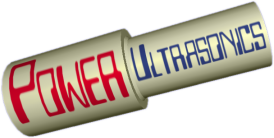Many factors determine the success of an ultrasonic welding process long before it gets to a welder, most notably component materials and joint design. However at this stage we look at adjustment and set up of the welding equipment, for which the most important factors are amplitude, clamping force, timing and trigger force.
It may seem strange that power is not included in this list, but this was deliberate. Ultrasonic equipment for plastic welding invariably works at constant amplitude, with generator power being adjusted automatically as required to maintain the chosen vibration amplitude (known as "Power by Demand"). Thus power may be a limitation on the process (if the equipment is unable to supply as much power as the process demands) or a measure of weld quality (by studying the variation of power with time) but power is not a variable that can be set by the operator.
Amplitude
Some ultrasonic generators feature an electronic amplitude control - this is a convenience for small changes but is generally much less efficient than the traditional method of setting up amplitude - horn gains. A typical plastic welding "stack" may comprise transducer, booster and sonotrode. Both the booster and sonotrode will have a known gain - the ratio of amplitude output to input. The total gain of a stack is found by multiplying the individual gains, eg. using a 1.5 : 1 booster and a 2 : 1 sonotrode the total gain will by 3 : 1, and given 20 microns peak to peak at the transducer we can expect 60 microns peak to peak at the tip of the sonotrode.
Increasing amplitude will provide more energy to perform the weld, but beware of overloading the generator (if the process demands more power than it can supply) or overstressing the sonotrode - stress is proportional to amplitude and fatigue fracture is always a danger.
Clamping force
Since ultrasonic welders generally use pneumatic cylinders to provide clamping force this is normally set by adjusting air pressure. Like higher amplitude, increased clamping force should provide more energy to the welding process, and for the same reason it is possible to overload the generator by setting clamping force too high. Another issue is to avoid clamping the joint rigidly - if there's no relative movement to generate friction then welding won't take place. This is most likely in far-field welding where the component have a limited capacity to transmit vibrations to the joint.
Timing
Welding equipment allows selection of (at least) weld time and hold time. Weld time is critical, and will generally be the last setting adjusted (and the first to be re-adjusted when something goes wrong!). Obviously, weld time should be increased if the weld is weak and poorly formed, or reduced if the weld shows excessive melting and flash. A good process will have a useful operating window between these extremes.
Hold time (the delay after the ultrasonics are turned off before clamping force is released) tends to be less critical, provided it's long enough for the weld to cool and harden.
Trigger force
The setting of trigger force (the clamping force that triggers the ultrasonic system to switch on) varies enormously with the process. Some welding processes (eg. staking) benefit from a pre-trigger, ie. the ultrasonics are turned on before the sonotrode contacts the part. Others require the components to be firmly clamped before ultrasonics are applied.
